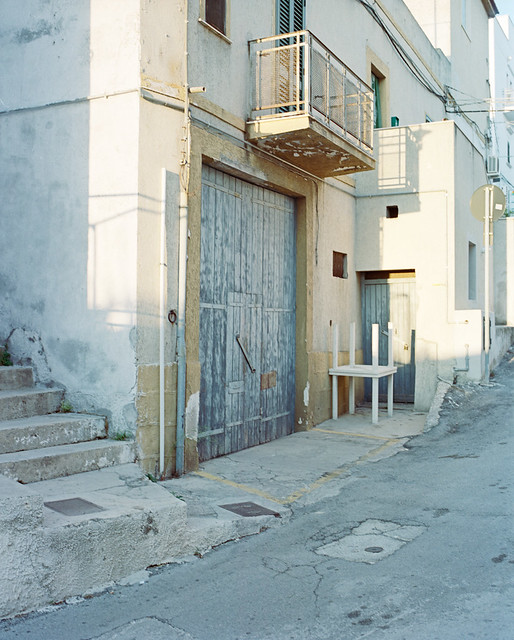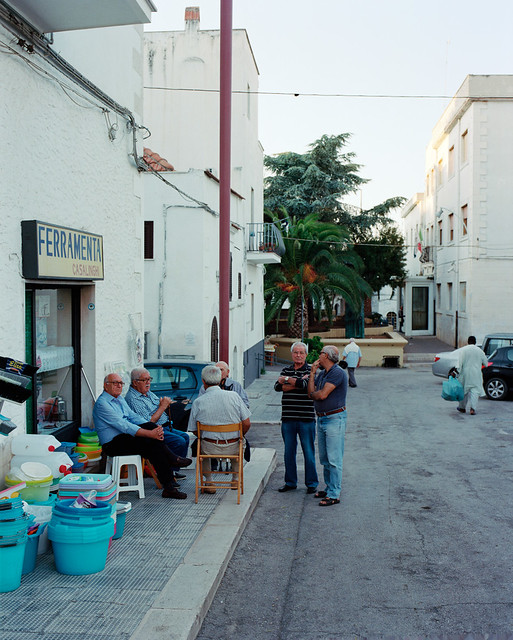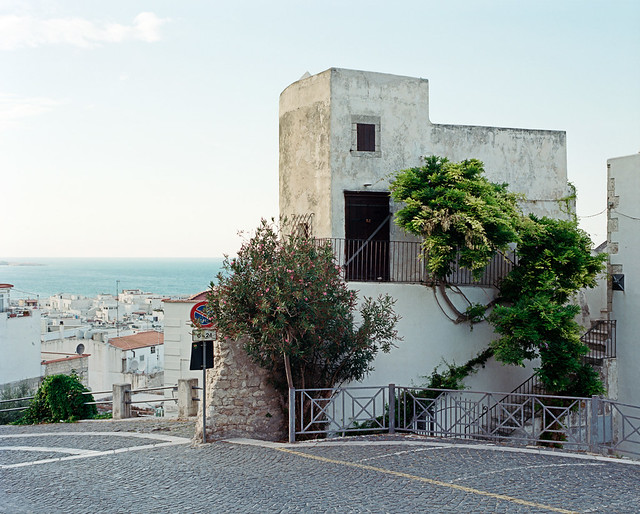I do wonder why I keep coming back to film. Apart from feeding the XPan, where I don’t have a choice, it really doesn’t make much logical sense. It may make emotional sense, which is probably more important in a creative context, but to what degree that emotion is nostalgia is debatable. Up until 2003 I shot exclusively film, apart from photography intended for multimedia and illustration work, which I was a lot more interested in that straight photography up until around the turn of the century. I carried on dabbling a little with Medium Format film for a while, but found it too cumbersome to fit in with my very limited photography time.
There is of course a debate which precedes “Film v. Digital”, and that is “Positive (aka Slide) v. Negative” (not to mention “Glass Plate v. Wax Cylinder” or “Vinyl v. Polyester”). I was firmly in the Positive camp, and indeed when I talk about “coming back to film” I actually mean experimenting with negative film. I’ve used Kodak Portra 400 in the XPan, and under a certain type of light, essentially strong Mediterranean sunlight, it works pretty well. Indeed, it is quite difficult to distinguish from my favourite slide film, Kodak E100G, although the E100G is a little denser. I also find Portra gives a slight reddish hue in mid tones, but that could well be down to scanning. And there lies the main issue with negative film: there are a million interpretations of the negative, and they’re all largely subjective. With positive film, you have a reference - the developed slide itself. There is a certain amount of leeway for altering the look of a positive scan - more so than many give it credit for - but essentially, if you got your exposure right, the main objective of scanning slide film is to get as near a match to the transparency itself on a light table, although nothing quite matches that look.
With all that in mind, I nevertheless took my newly acquired Olympus OM4Ti, loaded with Portra 400, to my reference pre-alpine glacial valley, along with my Olympus EM-5 as benchmark. The results are, well, interesting. Being impatient, I had the film processed at a 1-hour photo lab, which was perhaps not ideal. I also had them do some auto-scan JPGs for me as an index. I then scanned a few frames using Silverfast 8.5 and the Opticfilm 120. Next, I spent a rainy Sunday tuning a film profile for Portra 400. This is actually a thankless task, as it all depends on exposure, lighting, and intent, and getting one fits-all profile just isn’t going to happen. Silverfast’s new Portra 400 NegaFix profile is a good starting point, but my guess is that it assumes nominal exposure, and I’ve followed the current Portra gurus and dialled in +2 stops. Fiddling around with film profiles is far too much like hard work, but I eventually got something I liked. Although once I’d loaded the processed scans into Photoshop, I found them to be too warm in the midtones. Seems most serious Porta users contract out their scanning, but that’s not much to my taste.
ANYWAY.
The other thing is that my 35mm photography skills are obviously very, very rusty. Being used to Micro Four Thirds focal lengths and depth of fields meant that I got the focus point and aperture completely wrong on the OM4’s 35mm lens. Still, what I’m really interested in here is the colour and to discover if thee is actually any benefit in 35mm negative film. Here is the evidence for the defence:
And here, roughly processed with CaptureOne’s Film Curve tuned for Olympus E-P5, is the evidence for the prosecution:
I guess that if you look just at the general scene rendition, there’s not that much in it. But the film images took more than a few hours and quite a lot of money to get to that point. The digital image took a few seconds and is essentially free.
So why bother with film at all? Good question. At 35mm I’m not sure there’s any point at all, at least for landscape, but at larger film sizes (including 24 x 65mm) the story is a little different. Film cameras are fun to use, of that I am in no doubt. But digital cameras can be ok too. And getting the final result out of film is another matter altogether.
I’m not quite done yet. Film deserves a better chance, with more careful technique and optimisations with filters and stuff. And for some reason, the digital advantage seems lesser in urban settings. Also, the positive v. negative debate remains. Perhaps I should treat the OM4 to one of my few remaining rolls of E100G, or more sensibly, a roll of Provia 100F. And on the other hand, there are clearly scenarios where Portra 400, or perhaps Fuji 400H, makes the XPan a far more flexible tool. But ultimately, what I miss about film is seeing transparencies on a light table. There’s no better way to edit a shoot, in my opinion, and you lose that with negative.


















